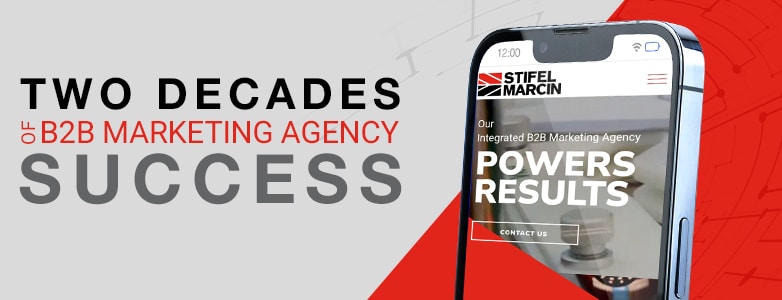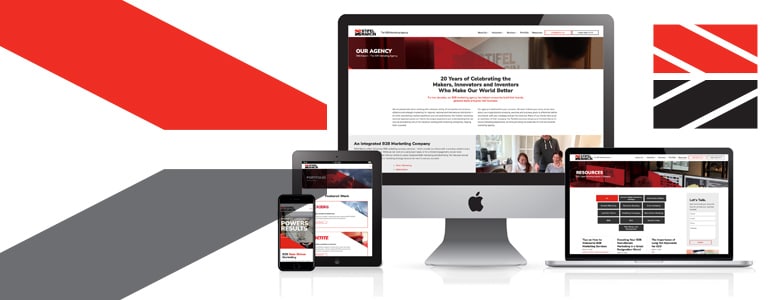B2B Social Media Best Practices
With 84 percent of B2B decision-makers and buyers looking at social media during their purchasing journey, the importance of social media as part of an integrated and strategic marketing plan can’t be understated. Whether your organization is new to social media or is looking to improve engagement results and reach, here are five B2B social media best practices to help your business shine: 1. Carefully Select Your Social Media Footprint With so many social media options available today (TikTok, Clubhouse, Instagram…oh my!), it can be tempting to feel like your organization needs to be represented on every channel. It’s important to recognize that just because a social media platform is popular, doesn’t mean it’s right for your business. Each organization is different, with varying audiences and goals. What works for one business might not work for yours. A social media marketing agency can help you define your goals, target audience(s), KPIs and budget to develop a smart and sustainable plan that best suits the needs of your business. It is far better to be strategic and successful on one or two channels rather than trying to maintain five and falling short. 2. Be Engaged Social media is social! It’s simply not enough to post a video or photo and walk away. Community management is crucial. Be sure to take the time to answer questions or comments in a timely manner (both public messages in your feeds and private messages in your inbox). Use posts to ask questions of your audience and then respond. Social media at its core should be a two-way street. Follow relevant hashtags and find opportunities to engage in conversations about like-minded topics. 3. It’s About Them, Not You When developing your social content, always ask the question “why would my reader care about this?” It’s easy to self-promote with facts and information about your products (and that has its place) but it’s important to remember that buyers are typically turning to social media to hear from thought-leaders and find answers that help them solve a pain point. Your content should provide value to your reader, whether it’s to educate, inform or entertain (think infographics, articles, video demonstrations, etc.). At Stifel Marcin, we take this balance so seriously we even have a formula we use to evaluate our social mix. 4. Use Consistent Branding While the tone across channels can vary, your branding should not. Several studies show that even minor inconsistencies in branding can have a negative impact on brand loyalty, causing potential and current customers to lose trust in a brand. Your look and voice should be consistent across all digital channels, from your web site to your social media channels and other online profiles. Maintaining and controlling your brand ensures your organization is seen as reliable, professional, and dependable. Learn more about why your organization needs consistent brand standards here. 5. Evaluate and Measure Your Results Last, but certainly not least, on our list of B2B social media best practices is to decide which key performance indicators (KPIs) that you’d like to track (perhaps engagement is high on your list or clicks or shares). It’s important to set defined metrics and then evaluate them regularly so that you can see what’s working and where there are opportunities for improvement. Analytics can help you see what topics are resonating with your audience(s), which hashtags are generating traffic and what types of content your audience likes best (videos vs photos vs polls, etc.). If you don’t have the resources or bandwidth to track data regularly, working with a social media agency partner can be a wise investment. Let’s Power Up Your Social Media Stifel Marcin understands the unique needs and challenges of B2B organizations. We’re happy to talk with you about these B2B social media best practices, building a winning social media strategy and pay-per-click social media marketing to increase traffic, conversions and brand loyalty. Contact us and a member of our team will be in touch shortly. Stifel Marcin – The B2B Marketing Agency Unlike many advertising and marketing agencies, B2B isn’t just something that we do, it’s all we do. We’ll work to help your brand achieve its goals through the strategic combination of creativity, communication and technology. Our focused client intake processes give us the ability to thoroughly understand your business, products and objectives, working to identify the competitive advantages and opportunities that will grow awareness, leads and sales. We develop innovative marketing plans with strategic, data-driven processes, presenting complex ideas and compelling messages that position your business ahead of the competition. As your cooperative partner, our integrated B2B marketing agency is dedicated to your success. If you are looking to elevate your social media strategy, or want to discuss where to start, our experts are here for you. Reach out today.
B2B Social Media Best Practices Read More »








